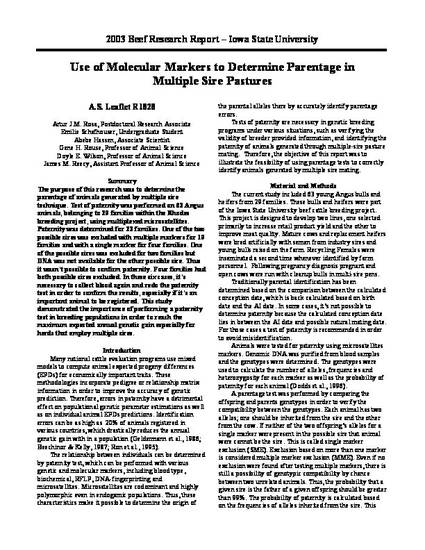
Unpublished Paper
Use of Molecular Markers to Determine Parentage in Multiple Sire Pastures
Beef Research Report, 2003
Document Type
Article
Extension Number
ASL R1828
Publication Date
2003
Disciplines
Abstract
The purpose of this research was to determine the parentage of animals generated by multiple sire technique. Test of paternity was performed on 63 Angus animals, belonging to 29 families within the Rhodes breeding project, using multiplexed microsatellites. Paternity was determined for 23 families. One of the two possible sires was excluded with multiple markers for 19 families and with a single marker for four families. One of the possible sires was excluded for two families but DNA was not available for the other possible sire. Thus it wasn’t possible to confirm paternity. Four families had both possible sires excluded. In these six cases, it’s necessary to collect blood again and redo the paternity test in order to confirm the results, especially if it’s an important animal to be registered. This study demonstrated the importance of performing a paternity test in breeding populations in order to reach the maximum expected annual genetic gain especially for herds that employ multiple sires.
Copyright Owner
Iowa State University
Copyright Date
2004
Language
en
File Format
application/pdf
Citation Information
Artur J.M. Rosa, Emilie Schafhouser, Abebe T. Hassen, Gene H. Rouse, et al.. "Use of Molecular Markers to Determine Parentage in Multiple Sire Pastures" (2003) Available at: http://works.bepress.com/james_reecy/35/
